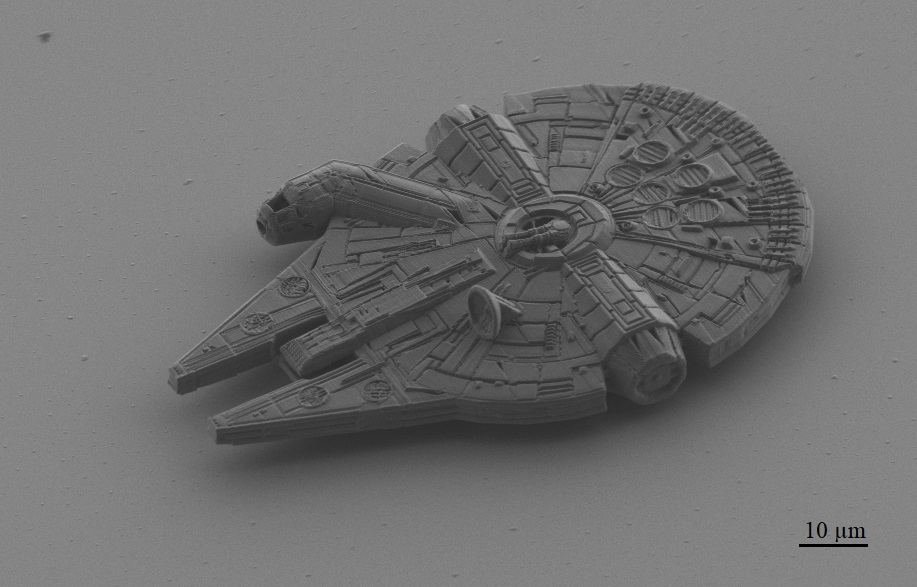Researchers from the University of Grenoble have developed a new way of 3D printing microstructures with deformable magnetic fields.
The team’s novel technique involves adding magnetic microbeads to a standard two-photon polymerization (2PP) 3D printed object. By precisely tailoring the properties of these miniscule materials, as well as the orientation of the beads, the scientists were able to create complex nano-tweezers that could be operated using only an external magnetic field.
Leveraging their new process, the researchers believe it could also be possible to develop enhanced microactuators, or even magnetically-poled hydrogels for drug delivery applications.

Making moves in microfabrication
Nano 3D printing technologies offer excellent versatility in terms of material compatibility and shape flexibility, and this has enabled their use within a variety of medical and microfluidic applications. In recent research, scientists have now started to take a new approach to nanofabrication, by assessing the possibility of modifying 3D printed structures via an external stimulus.
Magnetic actuation offers a promising avenue of inquiry in this area, as it enables remote stimulation to be enacted accurately, instantaneously and on a time-limited basis in confined environments. Despite this, incorporating magnetic materials into 3D printed objects has proved difficult thus far, and prevented the development of robust, dexterous microactuators.
In order to create an object that’s capable of completing complex motions, high‐performance magnets need to be integrated into it, but the 2PP process is reliant on the photoresist remaining transparent to the laser. Consequently various previous researchers have attempted to either dilute the magnetic nanoparticles, deposit them into thin films, or fill them into a printed mold.
Unfortunately, in many of these approaches, the amount of magnetic material that can be merged into the object is limited, which reduces the magnitude of the forces it’s capable of achieving. What’s more, altering the properties of the material also affects its transparency, which makes it incompatible with 2PP 3D printing and magnetically-doped polymers.

The Grenoble team’s microbeading process
To overcome these limitations, the Grenoble scientists added discrete magnetic microbeads to a soft unmodified microprinted structure. By precisely tailoring the magnetization of each bead prior to bonding, the team found that they were able to achieve various stages of remote actuation such as displacement, rotation, and controlled deformation.
The team created their microstructure using a Direct Laser Bonding (DLB) method, in which they randomly distributed polycrystalline microbeads into a UV-curable polymer substrate. During the process, the 3D printer’s laser goes from the object to the bead, curing the photoresist along the way. The technique was found to yield a particularly strong bond, that was most effective at the object’s mid-point.
While evaluating their microbeading method, the scientists opted to create a Star Wars-themed structure. The object featured a magnetic force of 0.5 T, and the team observed that by adding either isotropic or highly coercive beads, it was possible to change the direction of its magnetization.
Using a 10 mT rotational field, the team tested their structure over a glass plate, and due to the friction caused with the slide below, they were able to roll their beads in any desired direction. Based on these results, the researchers surmised that if the beads were precisely placed within a 3D printed structure, they could be aligned with, and controlled by, an external magnetic field.
What’s more, although the scientists constructed their magnetic object from an Ormocomp phororesist, they found that it could equally be made from a range of magnetic polymers. As a result, the potential exists for the creation of stronger torques and magnetic fields, that could yield a new generation of lighter and cheaper microactuators, for use in soft robotics applications.
2PP and 3D printed microrobotics
A number of researchers have leveraged 2PP 3D printing technologies to fabricate microrobots in recent years, often with the aim of developing enhanced drug delivery systems.
Researchers from Purdue University have adopted 2PP to develop trackable 3D printed microrobots. The team’s novel patterning method could be deployed to make nanoscale robotics for biomedical applications such as non-invasive diagnosis or drug delivery.
A team from Georgia Institute of Technology, meanwhile, has 3D printed “micro-bristle-bots” that can be controlled by minute vibrations. The devices are capable of transporting materials and detecting changes in the environment, which could lend them applications in areas ranging from mechanics to user electronics.
On the more commercial side of nanoprinting, Nanofabrica launched its first Workshop and Industrial systems in August 2019. Both of the 2PP machines have been designed to produce parts with micron and sub-micron levels of resolution, and are often used to produce medical, aerospace or semiconductor devices.
The researchers’ findings are detailed in their paper titled “Fabrication and Magnetic Actuation of 3D‐Microprinted Multifunctional Hybrid Microstructures.” The study was co-authored by Victor Vieille, Roxane Pétrot, Olivier Stéphan, Guillaume Delattre, Florence Marchi, Marc Verdier, Orphée Cugat and Thibaut Devillers.
To stay up to date with the latest 3D printing news, don’t forget to subscribe to the 3D Printing Industry newsletter or follow us on Twitter or liking our page on Facebook.
Looking for a new podcast? Be sure to subscribe to the Another Dimension podcast on your chosen podcast player to make sure you never miss an episode.
Are you looking for a job in the additive manufacturing industry? Visit 3D Printing Jobs for a selection of roles in the industry.
Featured image shows the team’s nanoscale 3D printed model of the Millennium Falcon, that it used to test its novel 2PP process. Image via Microlight3D.



